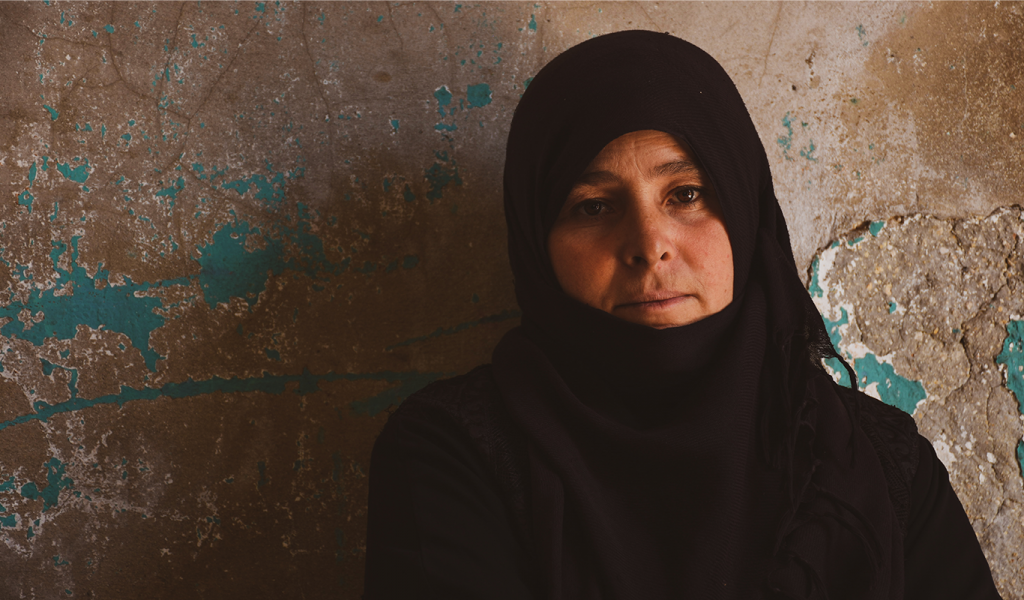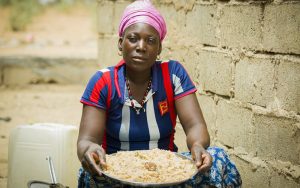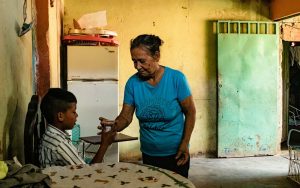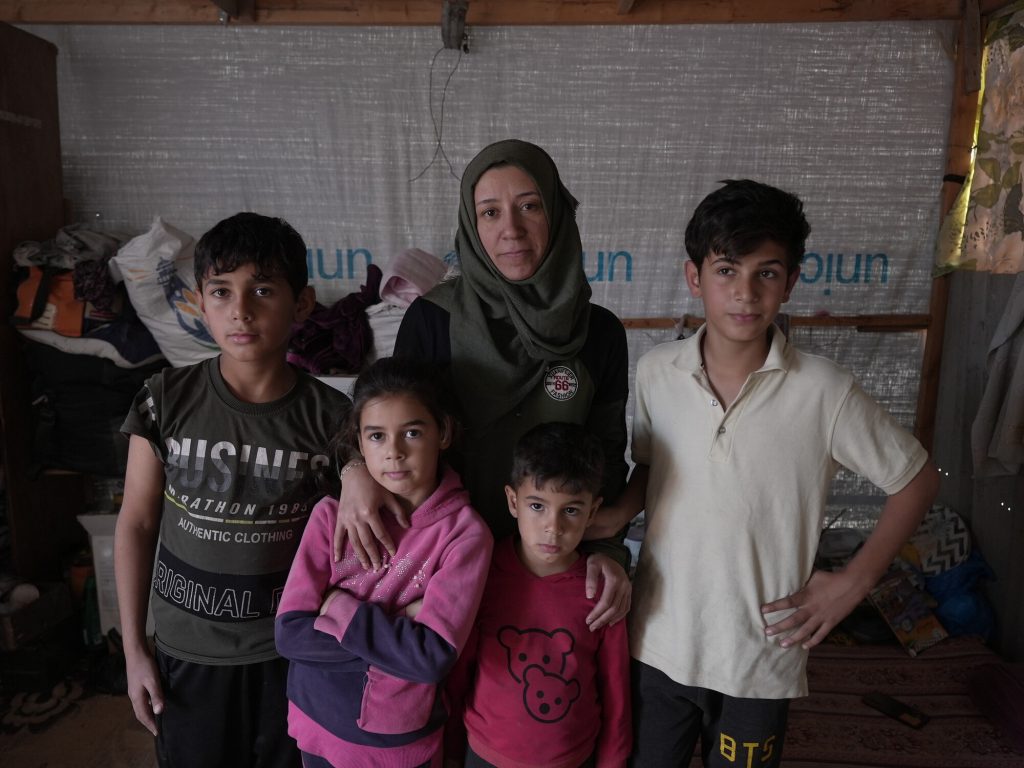Conflict, Climate Change and COVID-19 Drive Extreme Hunger
The effects of conflict, COVID-19, and climate change have intensified the global hunger crisis. Here are some of the world's hunger hotspots and the families experiencing extreme hunger.
"Most of the times, when we have little to nothing to eat, I struggle to get my children to sleep at night," says Aishah Sadaah, a mother of four from Yemen who has been on the run for three years, displaced by conflict. "They ask for food and I try to distract them, telling them stories until they’re asleep, then I look at them and pray for a better life until I get stolen by sleep."
Sadaah's situation is all too common right now as many parts of the world are experiencing a devastating food crisis. In the year and a half since the pandemic began, ongoing conflict, combined with economic disruptions created by the pandemic and the escalating climate crisis, have intensified food insecurity in the world’s hunger hotspots.
These three lethal “Cs of hunger”—conflict, COVID-related inequality, and climate change—have contributed to 155 million people going hungry this year. Nearly two out of every three of these 155 million people are going hungry primarily because their country is in war or conflict.
A new Oxfam report, entitled “The Hunger Virus Multiplies" argues that hunger is more deadly than COVID-19 itself. Since the start of the pandemic, the number of people experiencing famine-like conditions has increased six-fold—surging to more than half a million people. Last year, our Hunger Virus report warned that the threat of hunger—particularly hunger linked to the impacts of the pandemic—could lead to more deaths than COVID-19 fatalities.
Unfortunately, the situation has only gotten worse. Currently, 11 people are dying from hunger every minute.
We need to take drastic action now to stop hunger from spiralling even further. Learn more about hunger hotspots and how people pushed to extremes in these countries are surviving, what Oxfam is doing to help them, and how you can join the fight against hunger.
Syria
Drivers of Hunger: Conflict + Climate Change
No country has been affected more by hunger in the last year than Syria. Nearly two out of three people—12.4 million people—face acute hunger. This 88 per cent increase from last year stems from COVID-19-related economic fallout on top of the effects of 10 years of conflict.
An Oxfam study found that women-headed households have been hit the hardest, reporting an extreme decline in their food consumption. Aisha Ahmad, a farmworker in rural Aleppo, is one such woman. Moussa, a widow, is struggling to feed her eight children on her income, which is dwindling due to low rainfall.

Aisha Ahmad, 35, is a widow and breadwinner of her family of nine who lives in rural Aleppo. Photo: Islam Mardini/Oxfam
Before COVID-19, Aisha, 35, says her family was doing relatively well. The farm work was difficult, but she did not mind hard labour if it meant her children were taken care of. In those days, she could afford to buy whatever they wanted to eat and was able to daily cook two to three meals of nutritious food for her growing children.
The pandemic changed everything. During curfew, she had to stop working. They lived off handouts from neighbours. Now she says the prices for food are so high that it’s difficult to find anything to cook. A typical meal is tomato paste sandwiches. They are down to one meal a day, if that.
"There is no quality food to feed my children," she says. "Their bodies are weak and skinny. My children sometimes get dizzy because of the lack of nutrition and can't even concentrate on one thing," she adds.
Oxfam has assisted hundreds of families in the Aleppo governorate by providing them with three batches of unconditional cash aid. We're targeting the most vulnerable families, focusing on women who are heading their households to help them purchase items for their basic needs and improve their diets.
Ethiopia
Drivers of Hunger: Conflict
More than 350,000 people in Ethiopia's Tigray region experienced famine-like conditions between May and June 2021, according to recent analysis. In Tigray and surrounding areas, 74 per cent of the population is expected to face deeper levels of acute hunger beginning July 2021.

Before she lost her home, Fantu Gezay (name changed), 51, used to rent her plot of land to other farmers for a living, but ongoing conflict and the delay in rains have disrupted her livelihood. She has received food assistance from Oxfam.
Fantu Gezay (name changed), 51, is a farmer and single mother of six children living in Raya Azebo woreda in the Tigray region. In addition to growing her own crops, she earned money by renting her land to other farmers for a living. When fighting broke out for three consecutive days in November, Fantu and her children were forced to flee into the highlands. They hid in the mountains with no access to food or water.
"The conflict erupted when farmers were about to harvest the produce left from the locust invasion," she says. "However, whatever remained from the locust was destroyed by the war."
Fantu lost her home and possessions as well as her income. Most farmers in the region are dealing with disruptions to their work, including the farmers who use to rent from her.
Oxfam is responding to the current emergency in Tigray together with the Office for the Relief and Development of Amhara and the Ethiopian Orthodox Church–Development and Inter-Church Aid Commission in South Tigray, West Tigray, and the neighbouring Amhara region to help meet basic health, protection, and food needs. So far, Oxfam and partners have reached 50,000 people, including Fantu's family.
West African Sahel
Drivers of Hunger: Conflict
The region encompassing Burkina Faso, Chad, Mali, Mauritania, Niger, Nigeria, and Senegal has seen a 67 per cent increase in hunger since last year. Continued violence has forced 5.3 million people to flee their homes. Insecurity has cut off farmers from their agriculture. Last year, along with the economic impact of COVID-19, the climate crisis disrupted the agricultural season, limiting stocks and people’s livelihoods.

Zoré Fatimata receives food assistance from Oxfam via cash transfers in Burkina Faso. Photo: Cissé Amadou/Oxfam
Zoré Fatimata, 29, is from Raogo—a village in Burkina Faso—where she lived with her family of 19, including her mother-in-law, husband, co-wife, and their children. After enduring regular attacks on their village from armed groups, they had to seek refuge in the city.
Displaced and with their livelihoods disrupted, they earned money cleaning houses and doing laundry. When the pandemic started, they were told to stay home. Not only did that cut off their income, but their ability to purchase food.
Zoré's family depends on food distribution to eat. She explains that they receive bags of millet or rice, but that food has to be carefully rationed to last until the next distribution.
"Because there's no food, you have to ration and eat slowly; you eat in the morning," she says. “When we were in our village, we used to prepare a dish and a half of millet or rice per day. Here, it has become half a dish." While the distributions are meeting an immediate need, Zoré says she would prefer cash, so they can buy what they need.
In Burkina Faso, Oxfam has helped 97,655 people through cash transfers in collaboration with its partners Alliance Technique d'Aide au Développement and Association pour la Gestion de l'Environnement et le Développement. Fatimata’s family has used the cash transfers to purchase food.
South Sudan
Drivers of Hunger: Impacts of COVID-19, Conflict, Climate Change
This year, as South Sudan celebrates 10 years of independence, the country is also experiencing one of the worst food crises in the world. Although the peace agreement is holding, escalating violence between armed groups has heightened insecurity and displaced 4.3 million South Sudanese. The conflict has disrupted livelihoods, particularly those who work in agriculture.

Jookdan Simon sets a fire. Photo: Dominic Kango Amos/Oxfam
COVID-19 added to food insecurity, interrupting the flow of goods as lockdowns led to unemployment—especially for informal workers, the majority of whom are women. On top of this, unusual flooding during 2020 affected an estimated 856,000 people, causing displacement and crop loss.
Jookdan Simon, 35, is one of the 7.2 million South Sudanese struggling to find enough food each day. The mother of five has resorted to a trick to soothe her children when they cry from hunger. She sets an empty saucepan with a cover on the fireless stove and pretends to cook until the children fall asleep. By the time they wake up, they are ready for their only meal of the day, usually consisting of sorghum, belila—corn boiled with oil and salt—and beans.
The violence in Pibor has displaced her family, making them vulnerable to hunger and disease. The ongoing violence, combined with the COVID-19 pandemic and extreme climate events such as flooding has had devastating effects.
Jookdan's family is receiving unconditional cash transfers from Oxfam, which are distributed twice a year. They are part of Oxfam’s aim to reach 102,000 people in the hunger hotspots of Akobo and Pibor with water and resources for sanitation and hygiene, food security, and safety.
Venezuela
Drivers of Hunger: Impacts of COVID-19

Clavel Lopez cares for her 11-year-old grandson in their home in Venezuela. Since her husband emigrated to Colombia, she is his sole caretaker. Photo: Rolando Duarte/Oxfam
Clavel Lopez (name changed), 62, lives in a border municipality of Venezuela. Getting food to eat is a daily struggle. Heavy rains plague the area, so people like Clavel, who survives off the food grown in her small plantation, face further food insecurity.
As a pensioner, Clavel receives a monthly income and rations. Since the pandemic began, she says the rations have been cut down to a packet of flour or a kilo of rice. The pandemic has limited the availability of food for purchase, particularly for those with no access to cash. Clavel says she has spent whole days searching for stores that accept payment by debit cards.
"There are times that after all that trip we return with nothing, either because there is no payment system with debit cards or because there is no light," she says.
Because of the economic instability in Venezuela, Clavel's husband emigrated to Colombia. Now she cares for her 11-year-old grandson alone. They've been able to get some relief through an Oxfam-supported community canteen project, which provides them with a daily plate of hot food. We are also providing protection and prevention materials for COVID-19.
What Can We Do to Help People Experiencing Hunger?
Since the pandemic began in early 2020, Oxfam has reached nearly 15 million of the world’s most vulnerable people with food, cash assistance and clean water, as well as through projects that support farmers. We work with more than 694 partners across 68 countries.
We can't let people face this hunger crisis alone. We must tackle the intersecting crises of conflict, COVID-19, and climate change. We must address the long-term, systemic inequality that fuels and worsens this crisis.
We cannot solve this three-fold emergency without addressing inequality and acknowledging that historically marginalized communities suffer the worst effects. That's why Oxfam is:
- Demanding that billionaires pay their fair share of taxes to support stronger communities.
- Forging inclusive and sustainable ways to address conflict.
- Supporting a People’s Vaccine that is accessible to everyone, so we can end the pandemic.
- Urging rich polluting nations to cut emissions to tackle the climate crisis.

